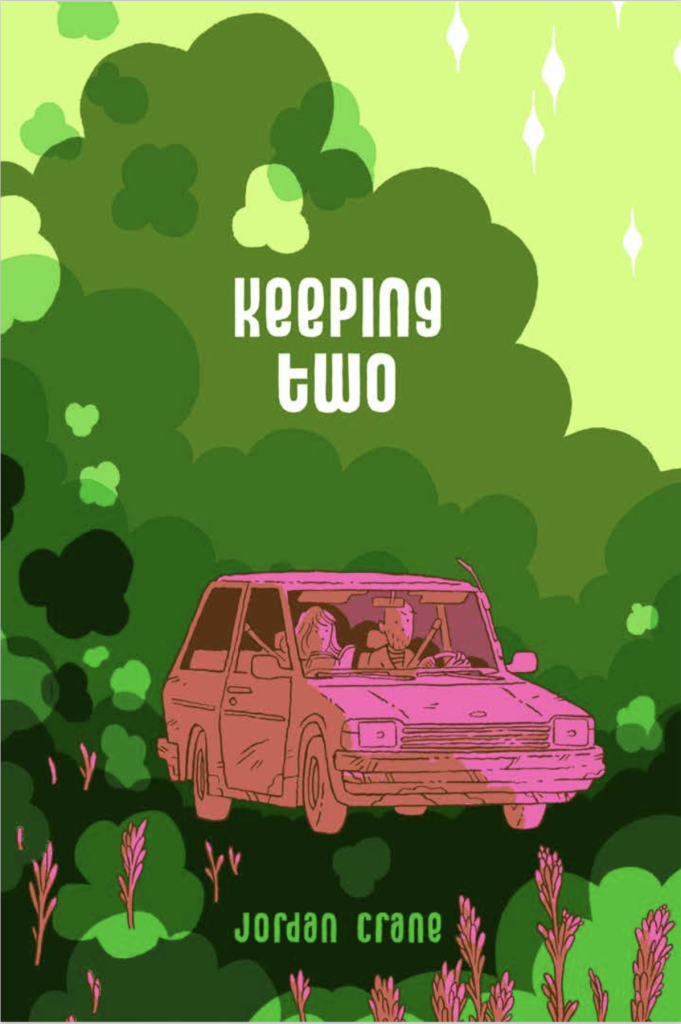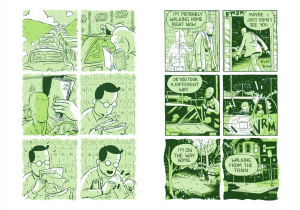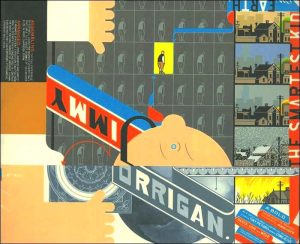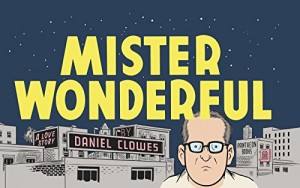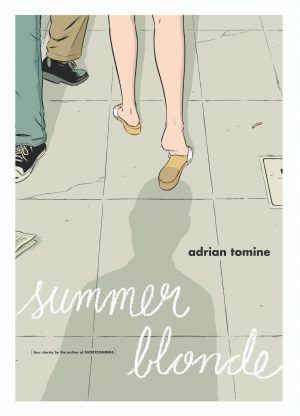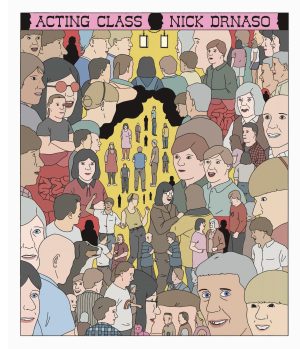Review by Graham Johnstone
Youngish couple Will and Connie arrive home after a long, tense drive. Connie agrees to go shop for food while Will cleans. As time passes, he increasingly worries, and eventually heads out to look for her. Meanwhile Connie returns home, and, in an elegant reversal, worries about the absent Will. It’s a simple plot for a 300 page book, most of which comprises their memories and imaginings while apart. For each their fears are amplified by guilt over their bickering ‘last’ moments together.
Jordan Crane’s storytelling is confident and, here, very decompressed. Four wordless pages of Will washing dishes may seem excessive, but this slow pace builds the duration and tension of Connie’s absence. In contrast, there are some compressed flashbacks, for example to earlier days, and hopes for a future possibly now lost. Crane uses comics’ techniques thoughtfully, like tail-less balloons containing snippets of speech, to evoke chattering crowds encroaching on Will’s thoughts. There are some glitches though, like four pages spent on Connie chasing a blown-away map, without investing enough panels beforehand to capture her reading then dropping it. Rapid intercuts between memories, and their various imagined scenarios of the ‘missing’ partner, create a demanding read, and are further complicated by a parallel narrative of a more obviously troubled couple.
Crane distinguishes present-time panels with black borders. However, everything else, (most of the book), has wiggly gutters against the tonal backgrounds, with no further visual or textual signposting of transitions between memories and the various imagined scenarios. The parallel narrative turns out to be a book Connie had been reading to Will as he drove. Crane’s signalling of this (pictured, left) is ingenious, yet easily missed. In a book apparently without page count concerns, he could have spent a few more panels making this clear. The book is printed in black and a single colour when more colours might distinguish different elements of the imagined scenes. The result is a disorientating read, and after numerous depictions of imagined calamities, readers may require a double take to check if a climactic event has actually happened.
From the opening mundane scenes, Crane’s illustration escalates with the story, deftly capturing every awful situation they can imagine each other in. His use of ghostly silhouettes of absent ones, (pictured, right), works well. He also finesses his ink lines over these 300 pages, though they’re drowned under a sickly haze of green, which the few pages with heavy black inks survive better. Perhaps the queasy effect is deliberate, but over such a long book it proves fatiguing. Changing background colours would have both added visual appeal, and differentiated the various narrative strands.
The title Keeping Two perhaps alludes to Will’s superstition that two recent deaths must be followed by a third – a tenuous pretext for his fears for Connie. It also alludes to the two narrative strands each with the challenge of ‘keeping two’ people happily together. The ‘fictional’ couple have lost someone, suggesting that will be mirrored in a reveal for the ‘real’ couple, but that proves a missed opportunity to satisfyingly link the two narratives.
Despite some contrivances, narrative glitches, and sickly colour, Crane tells two powerful stories. The focus on Will and Connie’s fears avoids mawkishness, and the sense of disorientation builds to a hallucinatory final sequence. Some light editing could have strengthened this further, but it’s an impressive and ultimately moving book.
